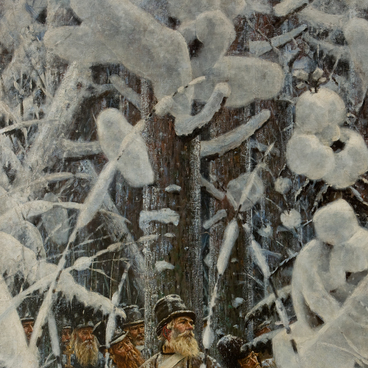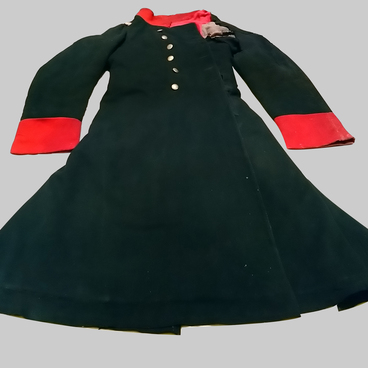The second phase of the Patriotic War of 1812 (from October to December) was full of fateful events. One of the most iconic was the retreat of Napoleon Bonaparte, which looked more like a flight. According to the museum legend, the French emperor left Russia on the sledge presented to your attention.
The retreating commander traveled on the sledge almost ninety kilometers from the city of Vilna (now Vilnius) to the Neman. After this speed march, Napoleon held the last meeting with the surviving marshals in the town of Smorgon. It was attended by Davout, Beauharnais, Murat, Berthier, Ney, Lefevre, Mortier and Bessières. That evening they learned of the commander’s decision to return to Paris. It was December 5, 1812.
Napoleon kept his movements secret, so that the already depressed remnants of his army would not completely lose faith in their general. Everybody thought that the Commander-in-Chief had left for Warsaw to arrange issues. Upon arriving in Paris, Bonaparte intended to gather a new army and rehabilitate himself by renewing the war with Russia.
The sledge was made by Lithuanian craftsmen at the beginning of the 19th century. The exhibit has not only historical, but also material value. The exterior of the cart is decorated with forged elements and gilded parts; the soft leather seat is decorated with handmade stitches. This is a typical winter open-body carriage of the first half of the 19th century for VIP use. The vehicle is elegant and comfortable, but at the same time devoid of pompous pretentiousness.
The seats for the coachman and passengers are located within the same module, without any space zoning. At the back, there is a footboard for the servant who invariably accompanied gentlemen on travels. The frame is made of metal, and the lining is made of wood. The runners are made of bent solid wood and reinforced with metal stripes. Such elements enhanced the driving qualities of the wagon, protecting the skids from mechanical damage and premature wear. In those days, they were called “undercuts”. The vertical bars (poppers) which performed the functions of racks connecting the sledge body to the skids are also reinforced with metal ties for greater structural strength. The sledge is equipped with hooks for the shafts, and was intended for a single-horse harness.
The exhibit was handed over to the Mogilev Provincial Museum at the end of the 19th century. Orsha landowner Zekkert gifted the sledge to the museum for free. At the beginning of the 20th century (1910), the sledge was presented at the anniversary exhibition dedicated to the events of the past Patriotic War. The staff of the Mogilev Museum has reliable information confirming that Bonaparte used these sledges when returning to Paris.
The retreating commander traveled on the sledge almost ninety kilometers from the city of Vilna (now Vilnius) to the Neman. After this speed march, Napoleon held the last meeting with the surviving marshals in the town of Smorgon. It was attended by Davout, Beauharnais, Murat, Berthier, Ney, Lefevre, Mortier and Bessières. That evening they learned of the commander’s decision to return to Paris. It was December 5, 1812.
Napoleon kept his movements secret, so that the already depressed remnants of his army would not completely lose faith in their general. Everybody thought that the Commander-in-Chief had left for Warsaw to arrange issues. Upon arriving in Paris, Bonaparte intended to gather a new army and rehabilitate himself by renewing the war with Russia.
The sledge was made by Lithuanian craftsmen at the beginning of the 19th century. The exhibit has not only historical, but also material value. The exterior of the cart is decorated with forged elements and gilded parts; the soft leather seat is decorated with handmade stitches. This is a typical winter open-body carriage of the first half of the 19th century for VIP use. The vehicle is elegant and comfortable, but at the same time devoid of pompous pretentiousness.
The seats for the coachman and passengers are located within the same module, without any space zoning. At the back, there is a footboard for the servant who invariably accompanied gentlemen on travels. The frame is made of metal, and the lining is made of wood. The runners are made of bent solid wood and reinforced with metal stripes. Such elements enhanced the driving qualities of the wagon, protecting the skids from mechanical damage and premature wear. In those days, they were called “undercuts”. The vertical bars (poppers) which performed the functions of racks connecting the sledge body to the skids are also reinforced with metal ties for greater structural strength. The sledge is equipped with hooks for the shafts, and was intended for a single-horse harness.
The exhibit was handed over to the Mogilev Provincial Museum at the end of the 19th century. Orsha landowner Zekkert gifted the sledge to the museum for free. At the beginning of the 20th century (1910), the sledge was presented at the anniversary exhibition dedicated to the events of the past Patriotic War. The staff of the Mogilev Museum has reliable information confirming that Bonaparte used these sledges when returning to Paris.



